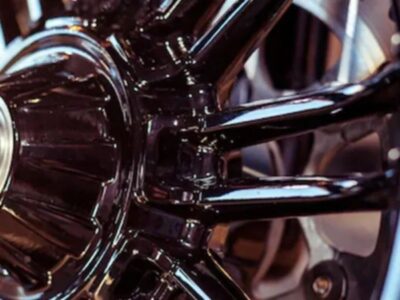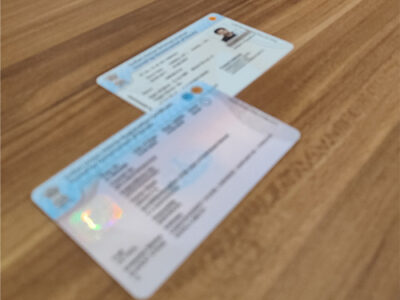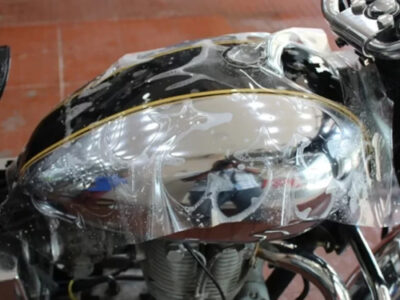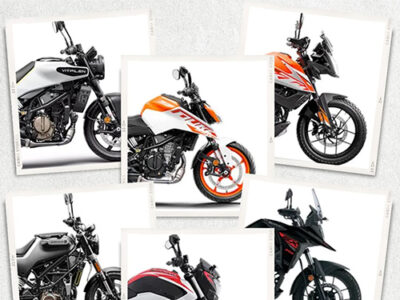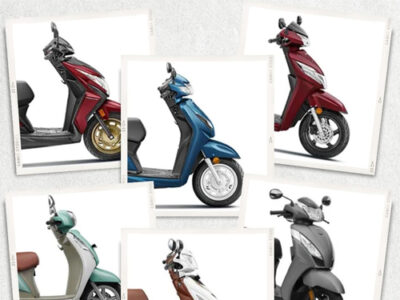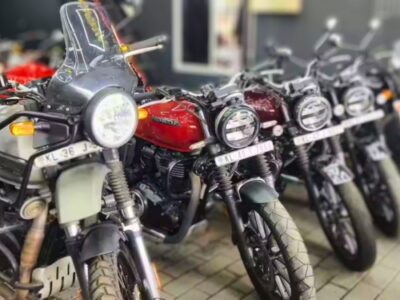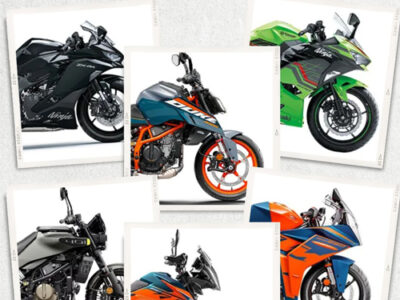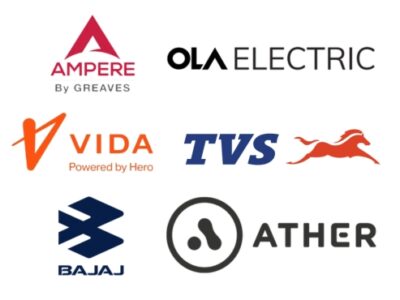
|
Getting your Trinity Audio player ready...
|
Long story short: Discover upcoming & available electric scooter & bike subsidy like EMPS and FAME III in India to save on your eco-friendly transportation.
What are the eligibility criteria to get a subsidy on an electric scooter and bike in India?
To be eligible for these subsidies, electric scooters must meet specific criteria, including having a lithium-ion or advanced battery technology and containing at least 50% locally sourced components as per the Phased Manufacturing Programme (PMP). Additionally, applicants must provide valid identification, proof of address, and, in some cases, an income certificate. The name on the application must match the ID proof, and the applicant must not have claimed a similar subsidy for another scooter.
How to get a subsidy on electric scooter in India?
The process for claiming an electric scooter subsidy involves several steps:
- Research and Purchase: Conduct thorough research to identify eligible electric scooters and purchase one from an authorized dealership.
- Registration: Register the purchased scooter with the appropriate Regional Transport Office (RTO).
- Application Submission: Visit the official website of the Ministry of Heavy Industries or relevant state portals to access the subsidy application form. Complete the form with the necessary details and submit it with the required documents, such as ID proof, address proof, income certificate, and vehicle details.
- Verification and Approval: The application will be reviewed, and if approved, the subsidy will be credited, reducing the effective cost of the scooter.
EMPS 2024 electric scooter & bike subsidy scheme
The Electric Mobility Promotion Scheme (EMPS) 2024 is a government initiative for promoting the adoption of electric vehicles (EVs) in India, mainly focusing on electric two-wheelers (e-2Ws) and three-wheelers (e-3Ws).
EMPS 2024 is to accelerate the adoption of electric two-wheelers (e-2Ws) and electric three-wheelers (e-3Ws) in India. The scheme initially had an outlay of Rs. 500 crore for four months, from April to July 2024, but was extended to September 30, 2024, with an enhanced subsidy of ₹778 crore.
Subsidy structure of EMPS 2024 for electric scooters & bikes
Under EMPS 2024, the subsidy for electric two-wheelers is Rs 5,000 per kWh of battery capacity, capped at 15% of the vehicle’s factory price, which is a reduction from the previous FAME II scheme that offered Rs 10,000 per kWh.
The scheme aims to support purchasing approximately 560,789 electric vehicles, including 500,080 e-2Ws and 60,709 e-3Ws.
Objectives and Benefits of EMPS 2024
The primary objectives of EMPS 2024 are to promote electric mobility, support domestic manufacturing, and create employment opportunities along the EV value chain. The scheme also aims to reduce harmful emissions, combat climate change, and improve air quality in India.
Pros of EMPS 2024
1. Promotion of Electric Vehicle Adoption
EMPS 2024 is to stimulate the adoption of electric two-wheelers and three-wheelers by providing financial incentives. The scheme offers subsidies of up to Rs. 10,000 for e-2Ws, Rs. 25,000 for small e-3Ws, and Rs. 50,000 for large e-3Ws, aiming to support the purchase of 3,72,215 EVs.
2. Encouragement of Domestic Manufacturing
The scheme promotes an efficient, competitive, and resilient EV manufacturing industry in India. It encourages domestic manufacturing and strengthens the EV supply chain, crucial for reducing import dependency and fostering local economic growth.
3. Employment Opportunities
The scheme emphasizes promoting electric vehicles to reduce harmful emissions, combat climate change, and improve air quality in India. EMPS 2024 aligns with the country’s long-term environmental goals by supporting the transition to cleaner transportation.
4. Environmental Benefits
The scheme emphasizes promoting electric vehicles to reduce harmful emissions, combat climate change, and improve air quality in India. EMPS 2024 aligns with the country’s long-term environmental goals by supporting the transition to cleaner transportation.
Cons of EMPS 2024
1. Reduced Financial Support
EMPS 2024 reduces monetary support substantially compared to previous schemes, which increases the price of vehicles. The average incentive reduction is 63% for two-wheelers, 37% for e-autos, and 38% for e-rickshaws, making electric vehicles less price-competitive.
2. Implementation Challenges
The certification process for electric vehicles to qualify for subsidies may take 30 to 45 days, during which vehicle selling occurs. This could lead to decreased consumer demand unless manufacturers offer significant discounts, posing a challenge for original equipment manufacturers (OEMs).
3. High Initial Costs
Despite subsidies, the initial cost of electric vehicles remains high due to expensive batteries and other components. This can be a barrier for consumers, especially compared to conventional vehicles.
4. Infrastructure and Technological Limitations
India’s dependence on imported batteries and adequate charging infrastructure are significant challenges. These factors can hinder technological progress and affect the widespread adoption of electric vehicles.
Timeline of EMPS 2024 electric scooter & bike subsidy scheme in India
- March 13, 2024: The EMPS 2024 was officially launched by the Ministry of Heavy Industries, Government of India, through a gazette notification dated March 13, 2024.
- April 1, 2024: The scheme was set to be implemented on April 1, 2024, with an initial budget of Rs. 500 crore. It was designed to run for four months, ending July 31, 2024.
- July 31, 2024: The initial phase of the EMPS 2024 was scheduled to conclude on July 31, 2024. All EVs must be manufactured and registered by this date to qualify for subsidies.
- August 2024: The government announced an extension of the EMPS 2024 by two additional months, pushing the end date to September 30, 2024. The budget was also increased to Rs. 778 crore to support more electric vehicles.
- September 30, 2024: The extended period of the EMPS 2024 was set to expire by the end of September 2024. This extension allowed for continued subsidies until the launch of the subsequent FAME III scheme.
- October 2024: The EMPS 2024 was expected to be replaced by the FAME III scheme, which was anticipated to be finalized and launched shortly after the conclusion of EMPS 2024.
Comparison of EMPS 2024 with previous electric scooter & bike subsidy schemes
FAME II Scheme
The Faster Adoption and Manufacturing of Electric Vehicles (FAME II) scheme, which concluded on March 31, 2024, was a predecessor to EMPS 2024. FAME II provided a higher subsidy of Rs 22,500 per vehicle than the Rs 10,000 offered under EMPS 2024. Despite the reduction in subsidy, EMPS 2024 focuses on enhancing the affordability of electric two-wheelers and three-wheelers.
Policy Evolution
The National Electric Mobility Mission Plan (NEMMP) initiated in 2013 laid the groundwork for subsequent policies like FAME and FAME II, which have evolved to support the growing demand for electric vehicles in India. The transition from FAME II to EMPS 2024 marks a shift in focus towards a more sustainable and competitive EV manufacturing industry.
Upcoming electric scooter & bike subsidy schemes in India
FAME III
The Faster Adoption and Manufacturing of Hybrid and Electric Vehicles (FAME) scheme is a key initiative by the Indian government to promote electric mobility. The upcoming FAME III phase is to build on the successes and lessons of its predecessors, FAME I and FAME II.
FAME III is the third phase of the Indian government’s initiative to promote electric and hybrid vehicles. It aims to continue the momentum of FAME II by addressing its shortcomings and introducing new strategies to enhance electric vehicle (EV) adoption and manufacturing in India.
Current Status of FAME III
FAME III is in the final planning stages and is expected to be implemented soon. However, it was not included in the recent budget announcements, indicating that its rollout is imminent but not immediate.
Transition from FAME II to FAME III
FAME II concluded in March 2024, and the Electric Mobility Promotion Scheme (EMPS) was introduced as an interim measure until FAME III is finalized. FAME III is expected to replace EMPS once it is implemented.
Objectives and Focus Areas
FAME III aims to correct the lacunae observed in FAME II and will introduce modifications to the subsidy structure. It will likely focus on increasing domestic value addition, phasing out the Phased Manufacturing Programme (PMP), and expanding geographical coverage.
Financial Outlay and Incentives
The scheme is to have a budget outlay of ₹10,000 crore, focusing on maintaining incentives at ₹10,000 per electric vehicle. It may also allocate ₹2,000 crore for developing electric mobility infrastructure, such as charging networks.
Target Segments
FAME III is to cover many segments, including public transport, private EVs, and potentially commercial vehicles. It might also emphasize faster charging technologies and increased localization of EV manufacturing.
Environmental and Economic Goals
The scheme aligns with India’s broader environmental goals, such as achieving net-zero emissions by 2070 and reducing carbon emissions by 1 million tonnes by 2030. It also aims to increase the market share of electric vehicles significantly by 2030.
Industry and Employment Impact
FAME III bolsters the domestic EV ecosystem by encouraging higher localization and creating employment opportunities. The EV industry requires significant investment in skilling and employment, with a need for about 30,000 new employees annually.
Challenges and Considerations
One of the challenges FAME III might face is ensuring that subsidies are effectively utilized to promote domestic manufacturing rather than benefiting imported vehicles. The scheme must address the need for a skilled workforce to support the growing EV industry.
Future Prospects
The government is working on ensuring that FAME III supports a green revolution in mobility, with a focus on sustainable and clean transportation solutions. The scheme is a crucial component of India’s strategy to reduce dependence on fossil fuels and promote renewable energy sources.
FAQ about electric scooter & bike subsidy in India
1. What is the Electric Mobility Promotion Scheme (EMPS) 2024?
EMPS 2024 is a government initiative by the Ministry of Heavy Industries to promote electric mobility in India. It is to encourage the adoption of electric two-wheelers (e-2W) and three-wheelers (e-3W), including e-rickshaws and e-carts, with a budget allocation of Rs. 500 crore for four months from April 1, 2024, to July 31, 2024.
2. Who are the beneficiaries of EMPS 2024?
The scheme targets both commercial and private owners of electric two-wheelers and three-wheelers. It applies to vehicles registered for commercial purposes and privately or corporately owned registered e-2Ws.
3. What are the financial incentives provided under EMPS 2024?
EMPS 2024 offers subsidies to encourage the purchase of electric vehicles. The subsidies include up to Rs. 10,000 for each two-wheeler EV, up to Rs. 25,000 for each small three-wheeler EV, and up to Rs. 50,000 for each large three-wheeler EV. These incentives are available for vehicles manufactured and registered by July 31, 2024.
4. What are the eligibility criteria for receiving subsidies under EMPS 2024?
Vehicles must have advanced batteries to qualify for subsidies and meet the Domestic Value Addition (DVA) requirements. This ensures the benefits of the vehicles that contribute to the domestic manufacturing ecosystem.
5. How does EMPS 2024 differ from its predecessor, FAME II?
EMPS 2024 differs from the FAME II scheme in terms of subsidy levels and focus. While FAME II provided higher subsidies, EMPS 2024 offers lower initial purchase costs for two-wheelers, emphasizing the development of a robust EV transportation system in India.
6. What is the Phased Manufacturing Programme (PMP) in EMPS 2024?
The Phased Manufacturing Programme (PMP) is a strategy under EMPS 2024 to encourage domestic manufacturing of electric vehicles and components. It aims to strengthen the EV supply chain and create significant employment opportunities along the value chain.
7. What is FAME III, and how does it relate to EMPS 2024?
FAME III is the upcoming phase of the Faster Adoption and Manufacturing of Hybrid and Electric Vehicles scheme. It is set to replace the temporary EMPS 2024, which was introduced after FAME II expired in March 2024.
8. How much subsidy on electric scooters in Maharashtra?
Maharashtra provides a subsidy of Rs 5,000 per kWh for electric two-wheelers, with a maximum subsidy of Rs 25,000. Additionally, the state has a 100% road tax exemption for electric vehicles. The state also offers a subsidy for scrapping old petrol two-wheelers, providing up to Rs 7,000 for purchasing a new electric two-wheeler.
9. How much subsidy on electric scooters in Delhi?
The Delhi government provides a subsidy of Rs 5,000 per kWh for electric two-wheelers, up to a maximum of Rs 30,000. Additionally, there is a scrapping bonus available for old vehicles.
10. How much subsidy on electric scooters in Gujarat?
Gujarat offers one of the highest subsidies for electric two-wheelers at Rs 10,000 per kWh, with a maximum subsidy of Rs 20,000. The state also provides a 50% road tax exemption.
Other related articles from Bikeleague India
Conclusion
Throughout this article, we explored Government incentives like EMPS & FAME 3 subsidy for electric scooters & bikes in India. If you have any other questions or queries, email us at bikeleague2017@gmail.com. You can also share your doubts or opinions in the comments section below. We are always eager to help and assist you. Also, here are several social media platforms of Bikeleague India to raise your suspicions.


